EX-01 Report – Visible Minorities Recruitment Campaign

Increasing the representation of visible minorities within the executive cadre
Contents
- Introduction
- Context
- Recruitment Strategy and Approach
- Recommendations & Next Steps
- Conclusion
- Appendices
- Epilogue
Introduction

Under the auspices of the Clerk of the Privy Council’s direction to Deputy Ministers to create marked progress in senior level representativeness, in September 2020, the Department of National Defence (DND) launched an external EX-01 pilot recruitment campaign aimed at increasing the representation of visible minorities within the executive cadre.
This initiative entailed the piloting of new approaches while embracing a balance of inclusivity, innovative methods and technology in order to make fundamental and long-lasting change in support of increasing representation and Diversity and Inclusion (D&I) at Defence.
Specifically, the objectives of the process were as follows:
- Identify immediate appointment opportunities for members of the visible minority group;
- Identify a talent pool for future opportunities;
- Introduce novel tools and technology to support barrier and bias-free assessments;
- Incorporate character and behaviour-based assessments;
- Provide a hyper-personalized experience for candidates and ensuring all candidates, including those who were not successful, benefit from the experience with feedback and understanding of gaps in order to progress in their careers; and
- Assess the pilot process against traditional approaches to identify systemic barriers and biases and identify recommendations for future recruitment processes.
Context
In May 2020, the President of the Treasury Board of Canada, the Honourable Jean-Yves Duclos, issued the 27th annual report to Parliament on Employment Equity (EE) in the Public Service of Canada. Overall, the Report indicated positive progress made by the public service in the recruitment, development and retention of a diverse workforce.
At the time and given Canada’s changing population, departments were asked to continue their efforts and focus to ensure the public service is representative of the people it serves – including recruiting people with a variety of experience, backgrounds and skills.
It was shortly thereafter the issuance of the aforementioned report, the government’s Employment Equity trajectory precipitously shifted towards a call for action and change.
The events that took place in the United States including the horrific murders of Breonna Taylor and George Floyd ignited international civil unrest, sparked international attention on racial injustice and inequalities. With the gruesome recorded killing of Mr. Floyd, his repeated calls for help and the words “I can’t breathe” the Black Lives Matter (BLM) movement took stage and this time, the protests appeared to be more racially diverse – with various ethnicities standing alongside black activists. This time it was different - the response more sustained, profound and widespread.
This cultural reckoning in turn precipitated the call to action for governments around the world to address systemic racism and discrimination, prompting the federal public service of Canada to pivot its conservative and traditional approaches in increasing EE representation towards more targeted, deliberate and demonstrable actions.
On July 27, 2020, the Deputy Minister and the Chief of Defence Staff at the Department of National Defence (DND) held a senior leadership committee, joined by the Deputy Clerk of the Privy Council, as well as leaders from the Federal Black Employee Caucus (FBEC). Following the delivery of a number of presentations as well as the sharing of raw and vulnerable stories, leaders heard profoundly that not all Defence Team members felt welcome, safe nor were treated with the same level of human dignity and respect as their Defence Team colleagues. In addition to the persistent manifestations of racist thoughts and behaviours, exhibited by both micro and macro-aggressions, there were related impacts on both mental health and wellbeing as well as recognition of systemic barriers faced by employees for opportunities and promotion.
The July 27th discussion precipitated a number of recommendations to address racial and systemic barriers within Defence. In a joint message to the Defence Team, the Deputy Minister and the Chief of Defence Staff affirmed their commitment to taking bold, decisive action to root out racial discrimination and hateful conduct all while promoting a diverse and inclusive workplace.
In October 2020 and shortly after the Clerk’s initial communication of the fiscal year 2020/21 corporate commitment to “Continue efforts to increase the social and cultural diversity of the workforce, and foster the inclusion of a broad range of voices and views in governance and decision-making” were these commitments revised and fortified to ensure Deputy Heads advanced measurable change along the following themes:
- Establishing a culture of inclusiveness that values diversity to combat racism and address systemic barriers;
- Increasing the representation of Black people and other racialized groups, Indigenous People, and Persons with Disabilities; and
- Ensuring that internal and external policies and programs are inclusive and free of systemic racism and barriers.
The message was clear.
“The time has come for us to make major advances, not minor improvements. We have had several discussions and I know that you all share in this commitment which the Government and Canadians expect us to accomplish.”
- I. Shugart Clerk of the Privy Council
As a goal for 2021 and as it pertained to diversity targets, Workforce Availability statistics were no longer to be considered as the ceiling but as the floor with the aim that over the course of the next several years, departments would close the gaps with demonstrable and steady progress.
Departments were to take concrete actions to tackle racism and improve representation at all levels - with specific attention paid to increasing the representation of Black People and other racialized groups, Indigenous Peoples, and Persons with Disabilities. This meant advancing measureable change, going above and beyond what was currently being done.
Recruitment Strategy and Approach

i. Founded on Research
Equality in Employment: A Royal Commission Report, also known as the Abella Report was released in 1984 and commissioned by Justice Rosalie Silberman Abella. The Report was a breakthrough that fundamentally influenced the fields of EE and human rights and in fact created the concept of Employment Equity. As the foundation of the Employment Equity Act of 1986, the Report focused on research and analysis for understanding systemic discrimination and provided recommendations to improve equality in employment for the four historically underrepresented groups.
“ It is not that individuals in the designated groups are inherently unable to achieve equality on their own, it is that the obstacles in their way are so formidable and self-perpetuating that they cannot be overcome without intervention.”
– Royal Commission Report
Fast forward to January 2021, the Public Service Commission of Canada (PSC) published its audit of Employment Equity Representation in Recruitment. The PSC examined more than 15,000 applications to 181 externally advertised jobs between April 1, 2016 and March 31, 2017 from 30 federal departments and agencies.
The audit, which analyzed representation at key stages in the hiring process, from the point of application, screening, assessment to final hiring decision, found that visible minorities, Indigenous Peoples, and Persons with Disabilities were more likely than other Canadians to be dropped from the hiring process. Women were the only employment equity group, to see an increase in representation as the hiring process moved along.
Additional findings revealed the following:
- Visible minority groups represented 30% of job applicants but 25% of those hired;
- Visible minorities were screened out more often than their counterparts on experience qualifications;
- Visible minorities were the only EE group who experienced less success than their counterparts when written tests were administered;
- Black candidates had less success after completing written tests;
- The representation of Black candidates decreased more than the rates of other visible minority groups;
- Black individuals made up 10% of job applicants yet only 6.6% of those hired;
- At the reference check stage, besides women, the 3 other EE groups experienced less success than their counterparts.
As a result, the audit provided 3 main recommendations:
- Deputy Heads should review their staffing framework and practices to ensure barrier free appointment processes for all EE groups, including visible minority sub-groups;
- The PSC should work with other central agencies and EE groups to identify specific factors that impact the success of EE groups and visible minority sub-groups within the hiring process, and to implement solutions;
- The PSC should increase its efforts in developing and promoting systems, tools and guidance that support inclusive external recruitment processes, with a focus on developing barrier-free assessment approaches.
ii. Call to Action
“It is both intolerable and insensitive if we simply wait and hope that the barriers will disappear with time. Equality in employment will not happen unless we make it happen.”
Royal Commission Report
The source of under-representation within the executive cadre at the Department of National Defence stems from long-standing systemic barriers which are not unique to its workforce and which represent a broader socio-political issue, prevalent at all levels of the federal Public Service.
For the most part, the long-standing barriers stem from institutional and systemic discrimination and racism and are founded on a deep-rooted system of interlocking relationships between individuals, institutions and structures. This system is designed to favour the dominant group, granting them an unearned set of advantages, benefits and choices, privileges that are not awarded to racialized and marginalized groups.
In a society characterized by racial inequalities and injustices, these inherent advantages possessed by white people lead to white privilege. While it doesn’t imply that a white person has not had to work for their accomplishments, they have not faced the same barriers encountered by racialized Canadians.
Rooting out racism and discrimination remains a challenge and will take time. The systems, complexity and self-reinforcing presence is woven into the various pillars of our society thus making it increasingly challenging to change – hence perpetuating status quo and choosing comfort over change.
In September 2020, the EX-01 Visible Minority Recruitment Campaign was launched - piloting a new approach to executive staffing seeking to embrace a balance of inclusivity, innovation and technology – a balance which would not sacrifice the values of merit, openness, accessibility and transparency at any cost. Through this ambitious and unprecedented approach, the overarching intent was to demonstratively address barriers and biases, produce actions to address representation gaps and most importantly effect fundamental and enduring change in support of Diversity and Inclusion at National Defence.
iii. Key Objectives
The primary objective of the EX-01 Visible Minority Recruitment Campaign was to increase the representation of visible minorities amongst the leadership cadre within the DND. With the support of the Fairness and Transparency Panel and the Assessment Board, as well as engagement with third-party vendors and hiring managers, innovative assessment platforms were piloted to identify, without bias, top-tier candidates to fill immediate and future EX-01 opportunities.
In addition to the above, the EX-01 process sought to accomplish the following:
- Evaluate this pilot against traditional approaches to identify systemic barriers and biases and identify recommendations for future recruitment processes;
- Sequentially configure, test and deploy two separate assessments platforms to assess applicants to top tier candidates;
- Incorporate character and attribute-based behaviour assessment to complement Key Leadership Competencies (KLCs) assessment;
- Provide a hyper-personalized candidate experience focused on transparency and ongoing engagement and ensuring all applicants, including those not deemed successful, benefit from a valuable experience with clear feedback in support of future career advancement opportunities;
- Provide unconscious bias training to hiring managers;
- Support departmental efforts in talent acquisition; and
- Position National Defence as an employer of choice where the workforce reflects diversity and representation in all areas of its business.
iv. The Assessment Board
Heeding longstanding recommendations regarding diverse assessment boards, the ADM(HR-Civ) formed a fully-representative assessment board consisting of respected public service senior leaders. Above and beyond its responsibilities to provide guidance and render decisions along the various critical gateways, the Board was an instrumental conduit in navigating the candidate experience through an objective D&I lens - thus ensuring merit was demonstrated and staffing values were upheld.
Assessment Board Memebership:
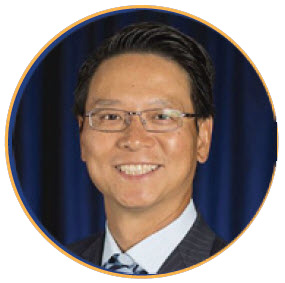
Kin Choi - Assistant Deputy Minister (Human Resources - Civilian) /Chief Human Resources Officer, Department of National Defence

Gaveen Cadotte - Vice-President, Policy and Communications, Public Service Commission
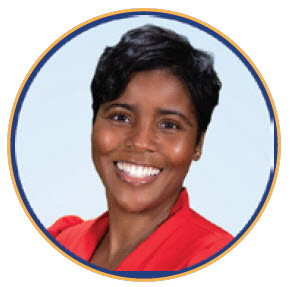
Jacqueline Rigg - Chief Executive Officer, Association of Professional Executives of the Public Service of Canada
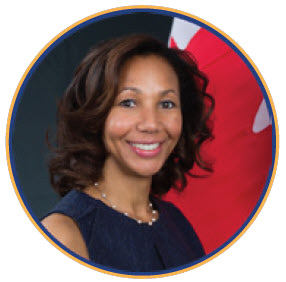
Mauricette Howlett - Director, Canada Revenue Agency
v. The Fairness & Transparency Panel
Recognizing the requirement to preserve fairness, ethics, accountability and transparency, an external to the department Fairness and Transparency Panel was assembled, comprised of recognized and well-respected senior leaders in the field of diversity and inclusion. The Panel who served as a sounding board throughout the EX-01 process, was responsible for raising strategic considerations and providing insight to support key outcomes and objectives while championing a diversity and inclusion lens. In addition, the Panel provided independent views and challenged assumptions thus assisting in the identification of potential barriers and biases. The Panel’s contribution strengthened the pilot’s risk mitigation approaches and supported the articulation of key success factors with the lens of supporting other organizations seeking to leverage this novel approach.
Panel Membership

Okenge Yuma Morisho - Deputy Minister, Municipal Affairs, Government of British Columbia

Paule-Anny Pierre - Executive Director, Centre for Diversity & Inclusion
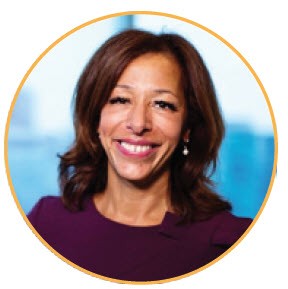
Maria McKay - Guest to the panel
Department of National Defence Executive Services
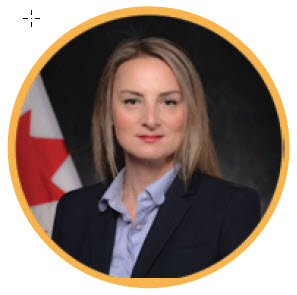
Marta Wodejko – Director, Civilian Executive Services

Anik Lamothe – Senior Executive Services Advisor
Human Decision Making - Assessment Board Decision Making

vi. Assessment Methodology and Platforms
The EX-01 Visible Minority Campaign, which was advertised from 11 September to 25 September 2020 attracted 471 applicants. Controversially and in addition to limiting the area of selection to visible minorities, the ADM(HR-Civ) made this marked commitment to not only prioritize the hiring of visible minorities, but to lend a focus to increase the representation of Black leaders, specifically encouraging members of the Black community to apply.
In addition to the above, the job advertisement incorporated inclusive language through a “Show Us / Tell Us” approach. This addressed the risk that applicants would self-screen prior to submitting their candidacy due to the notion that their CV would not meet the longstanding traditional public service language surrounding merit criteria.
The intent was to reengineer the hiring process, in essence flipping it upside down, in order to provide candidates with a real opportunity to demonstrate their skills and competencies at the onset and in a manner that proactively reduced, and in some instances, eliminated barriers and biases to being considered.
Instrumental to this initiative was the piloting of innovative assessment platforms which were administered to assess and qualify top tier candidates at the EX-01 group and level, who can then be matched to specific job opportunities across the Department as well as in other government departments and agencies.
Throughout the process, thorough quality assurance exercises were conducted to assure and validate the effectiveness and validity of tools and technology including output, recommendations, and underlying results, while the ultimate decision-making was preserved by the Assessment Board. Additional review and analysis of assessment platform support, capabilities, and experience were also completed.

vii. Candidate Willingness to Participate and Consent
Given the pilot’s key component in the experimentation of new technology and assessment platforms, the TBS’ Directive on Automated Decision-Making was referenced including Algorithmic Impact Assessment (AIA) to identify risk impacts and mitigation strategies to safeguard the candidate information. In addition, the Directorate of Access to Information (DAIP) was consulted and provided guidance regarding privacy and personal information management which was incorporated in the consent notices, methodology as well as communications to candidates.
To mitigate privacy concerns, the follows steps were taken:
- Candidates were notified in advance of the platforms being used as well as;
- the purpose for collecting, using and disclosing their personal information (video recordings for responses and their demonstration of Key Leadership Competencies (KLCs));
- what personal information was being sought;
- for what purpose and with what authority;
- the consequences for not providing the information;
- how the information would be used, disclosed and protected;
- for how long it will be retained; and
- candidates’ rights to access and correct their information.
In addition, candidates were provided comprehensive information regarding the implementation of the Artificial Intelligence (A.I) platforms, access to the platforms and their respective technical support teams, as well as full-time access to an HR Client Contact Centre.
Of the 471 candidates, 455 (97%) consented to proceeding with the assessment.
viii. Knockri
Knockri is an A.I. skills-based assessment tool designed to reduce bias and scientifically shortlist top performing candidates to the interview stage. By replicating the experience of a behavioural interview, Knockri leverages a video-based platform to capture candidate responses, and applies A.I. to assess skills across a variety of dimensions.
Knockri was selected through a carefully vetted procurement process and has met the ethical guidelines including privacy and ethics as to how data is collected, analyzed and purged. In addition, Knockri was awarded as Innovator of the Year by Ascend, one of North America’s largest diversity groups and has been given a seat at the World Economic Forum’s Global Council on Equality and Inclusion.
Knockri exclusively uses speech (content), which is then converted into text as the only point of analysis for a candidate’s submission. The backend of Knockri’s platform leverages machine learning to analyze the candidate responses and compares them against determined performance indicators. Knockri’s approach has been built specifically to reduce bias and promote equity in the recruitment process, through which the use of the video recordings – is used for two specific reasons:
- Reduce and minimize cognitive load within the assessment thereby contributing to flattening the playing field for minority candidates and minimizing the potential for adverse impact in assessments
- Simply designed to replicate an interview’s experience and make it straightforward to respond to questions.
The analysis of the responses is informed and overseen by industrial-organizational psychologists and guided by the Government of Canada (GoC) qualification standards as well as validated by HR Specialists. Visual and auditory identifiers from the video are not assessed - it is therefore the content of answers, and not the videos themselves that are analyzed. Hypothetically, a candidate could have shielded their camera and the results of their assessment would not have changed.
In support of the EX-01 pilot process, Knockri was sourced to assess each of the six KLCs – one of the GoC qualification standards that all Director-level public servants must demonstrate.
455 candidates were invited to complete the assessment between November 26 and 29. The assessment lasted approximately one hour for each candidate with a resounding 422 candidates completing the assessment. Additionally, accommodations and extensions were granted to assure equity, thus eliminating unfair disqualifications.
The Knockri platform itself leveraged behavioural-based interviews which is a widely recognized selection methodology and one of the strongest predictors of future job performance. Several factors contributed towards a positive experience including the efficient assessment of over 400 candidates in less than seven days.
The platform also provided an opportunity for candidate feedback which generated an average rating of 4.4/5 for experience, thereby increasing the likelihood that qualified candidates would continue in the selection process.
Key Leadership Competency
 Create Vision and Strategy
Create Vision and Strategy Mobilize People
Mobilize People Uphold Integrity and Respect
Uphold Integrity and Respect Collaborate with Partner sand Stakeholders
Collaborate with Partner sand Stakeholders Promote Innovation and Guide Change
Promote Innovation and Guide Change Achieve Results
Achieve Results
IX. PLUM
Plum was sourced as a complimentary assessment platform to evaluate and understand the candidate’s natural talent.
“Talents,” as described by Plum are recurring patterns of thought, feeling, and behavior and include as an example innovation, persuasion, teamwork, adaptation, communication, and so on. By quantifying talents, Plum assesses a candidate’s potential which then predicts their success in a particular role.
The Plum Talent Model is a data framework comprised of 10 overarching Talents with 36 competencies within those talents. The 10 talents: Adaptation, Communication, Decision-Making, Embracing Diversity, Execution, Innovation, Managing Others, Conflict Resolution, Persuasion and Team Work are foundational skills and attributes that differentiate high performers in roles.
To generate a profile, candidates complete a 25-minute Plum Discovery Survey, by answering a series of questions which assess personality, problem-solving and social intelligence.
Hiring managers on the other hand, complete a short Plum Match Criteria Survey which captures insights and determines specific criteria for each role. Members of the Assessment Board, Fairness and Transparency Panel, hiring managers as well as staffing and classification experts completed Plum’s Match Criteria surveys to identify required criteria for a generic EX-01 Director profile as well as specific EX-01 roles.
Following the completion of the candidate’s Plum Discovery Survey as well as the hiring managers Plum Match Criteria Survey, a Plum Match Score is then produced which determines an individual’s fit in a role with a single score. Match scores range from 30 – 99 with a match score of 65 considered as average. A match score of 80 or higher, also referred to as a “Plum Match”, is equivalent to the top 27% of users and was recommended by Plum as the benchmark to use for the purposes of the EX-01 pilot.
From 30 November to 3 December 2020, the 74 candidates who successfully passed the Knockri assessment, were invited to complete the Plum assessment. All candidates, completed the assessment, identifying 36 top-tier candidates (Plum Match score of 80 and above) as well as 38 candidates deemed as partially-qualified given they had successfully demonstrated the KLC requirements, yet based on not achieving the required Plum match score of 80, will require further assessment to confirm demonstration of merit.
As the testing algorithm for Plum was hosted on servers in the United States, additional steps were taken to inform candidates, and to anonymize any personally identifiable information by creating randomly generated alias email addresses which further safeguarded the candidates’ privacy and permitted the completion of the Plum assessment without providing identifiable information.
 True Team Player: These are people who have a tendency to work effectively with people and cooperate with others
True Team Player: These are people who have a tendency to work effectively with people and cooperate with others Powerful Persuader: have a special ability to convince others of a direction, activity, or idea, and influence decision-making
Powerful Persuader: have a special ability to convince others of a direction, activity, or idea, and influence decision-making Outcome Owner: These are people who have an incredible ability to set goals, monitor progress, and take the initiative to improve their work.
Outcome Owner: These are people who have an incredible ability to set goals, monitor progress, and take the initiative to improve their work. Peacemaker: have a remarkable ability to bring others together to resolve conflict and reconcile differences.
Peacemaker: have a remarkable ability to bring others together to resolve conflict and reconcile differences. Innovator: have a knack for generating novel solutions and creative ideas to solve problems.
Innovator: have a knack for generating novel solutions and creative ideas to solve problems. Marvelous Manager: take charge of a group and are uniquely positioned to motivate group members toward common goals.
Marvelous Manager: take charge of a group and are uniquely positioned to motivate group members toward common goals. Diversity Champion: understand others’ perspectives and deal effectively with different people, regardless of experience or background.
Diversity Champion: understand others’ perspectives and deal effectively with different people, regardless of experience or background. Decision Maker: People who are Decision Makers can make high-quality decisions, even when presented with limited information.
Decision Maker: People who are Decision Makers can make high-quality decisions, even when presented with limited information. Chief Communicator: these are people who have a unique ability to convey ideas effectively and identify messages that others are attempting to convey.
Chief Communicator: these are people who have a unique ability to convey ideas effectively and identify messages that others are attempting to convey. Adaptive Ace: People with high adaptation ability can adjust to changes in the workplace while maintaining a positive demeanor.
Adaptive Ace: People with high adaptation ability can adjust to changes in the workplace while maintaining a positive demeanor.
x. Quality Assurance / Human Verification Process
Throughout the pilot, a number of steps and actions were taken to analyze, plan and test the platform requirements, design and run the assessments while concurrently reviewing and calibrating the results against the objectives.
Specific to the Knockri assessment, two random samples from the top, middle and bottom 10% of candidates were selected with candidate responses listened to in order to assess whether each KLC was demonstrated. Subsequently, the results were amalgamated and paired against Knockri scores to determine potential variances. This manual validation exercise offered clear differentiation between the top, middle, and bottom percentiles. While Knockri’s existing framework and performance indicators were leveraged to match against KLCs, the correlation between the Knockri scores and Quality Assurance ratings indicated that the questions asked of candidates sufficiently assessed demonstration of the KLCs.
In comparison, a two-step process was implemented in Plum’s manual quality assurance, which sought to review the resumes of candidates scoring in the 80 percentile to ensure that the resumes reflected the caliber expected of an executive leader. Second, candidate resumes were reviewed against a basic high, medium, low scale to confirm that the required experience criteria was met. This holistic review ensured that the candidates deemed as meeting the qualifications through both Knockri and Plum assessments, met all of the required experience criteria as identified on the Statement of Merit Criteria thus confirming that merit was demonstrated and met.
Throughout the entire process, findings and updates were provided to the Board and Panel for their input, confirmation and endorsement of next steps.

xi. Key Findings
Gender
Of the 471 applications, 204 (43%) self-identified as women. Out of the 204, 197 (43%) candidates advanced to complete the Knockri assessment, through which 39 (53%) were among the 74 successful candidates. Therefore, the representation of women, increased along the various stages of the hiring process, whereas the representation of men slightly decreased.
When looking at the genders’ success rate across the visible minority subgroups, women in the Black, South Asian/East Indian, Non-White West Asian, North African or Arab as well as Non-White Latin American subgroups performed better than their counterpart.
Public Servant (PS) VS Non-Public Servant (Internal vs External Candidates)
With 55% of applicants self-identifying as Public Servants (PS), overall, the representation of PS candidates increased following the Knockri assessment. This result suggests that PS employees could be at an advantage. This is consistent with other audits, including the PSC audit, which indicated similar findings.
South Asian/East Indian and the “Other visible minority groups” subgroups are the only ones with a higher proportion of applicants that are not PS employees.
Following the Knockri assessment, only the “Other visible minority groups” subgroups had more candidates that were not PS employees than PS employees.
Visible Minority Sub Group Representation
Black candidates were the most represented of all subgroups at all stages of the hiring process. While the representation of South Asian applicants increased the most following the Knockri assessment, the representation of candidates in the “Other Visible Minority Groups” subgroup decreased the most.
| Visible Minority Subgroups | Applicants | Participated | Knockri Assessment | |||
|---|---|---|---|---|---|---|
| Black | 209 | 44.4% | 201 | 44.2% | 33 | 44.6% |
| South Asian/East Indian | 95 | 20.2% | 94 | 20.7% | 23 | 31.1% |
| Person of Mixed Origin | 30 | 6.4% | 27 | 5.9% | 5 | 6.8% |
| Non-White West Asian, North African or Arab | 64 | 13.6% | 63 | 13.8% | 9 | 12.2% |
| Chinese | 31 | 6.6% | 30 | 6.6% | 4 | 5.4% |
| Filipino | 3 | 0.6% | 3 | 0.7% | 0 | 0.0% |
| Japanese | 3 | 0.6% | 3 | 0.7% | 2 | 2.7% |
| Korean | 5 | 1.1% | 5 | 1.1% | 0 | 0.0% |
| Non-White Latin American | 18 | 3.8% | 18 | 4.0% | 1 | 1.4% |
| Other Visible Minority Groups | 36 | 7.6% | 34 | 7.5% | 3 | 4.1% |
| Southeast Asian | 8 | 1.7% | 8 | 1.8% | 1 | 1.4% |
| Total | 471 | 455 | 74 | |||
Key Leadership Competency Assessment:
Among the candidates that succeeded at the Knockri assessment, the average score for all KLCs was 81.3%. The highest to lowest scoring KLCs were Upholding Integrity & Respect at 83.3%, followed by Collaborate with Partners and Stakeholders at 83.1%, Mobilize People at 81.4%, Create Vision and Strategy along with Achieve Results tying at 81.1% and finally Promote Innovation and Guide Change as the lowest scoring KLC at 77.7%. These results generally align to the executive competencies – specifically areas of strength and areas to be developed (gaps).
Among the candidates that succeeded the Knockri assessment, Black and Persons of Mixed Origins had the highest average score for all KLCs.
In general, public service employees have better KLC scores than non-public servants.
Overall Knockri assessment findings:
- Women and Persons with Disabilities (close to 20%) were among the candidates with the highest success rates.
- When looking at visible minority subgroups, South Asian / East Indian had a higher success rate than the average.
- The women’s higher success rates can be seen across most of the visible minority subgroups. Indeed, women in the Black, South Asian/East Indian, Non-White West Asian, North African or Arab as well as Non-White Latin American subgroups performed better than their male counterparts.
- PS employees had a success rate that was double the one of non-PS employees. Similar results can be seen across all EE groups and visible minority subgroups.
Talent Assessment
Based on self-identification, of the 36 top tier qualified candidates, 25 (69%) are public servants, however, non-public servants performed better than their public servant counterparts on the assessment.
In addition, in terms of EE sub-group breakdown, of the 36 top-tier candidates, 33% self-identify as Black, with the next largest candidate representation of South Asian/East Indian at 25%, followed by West Asian / North African / Arab at 17% and Mixed origin at 11%. The remaining candidates represent the following EE sub-groups: Chinese, Japanese, Southeast Asian and Non-White as well as those that did not self-identify.
In terms of gender representation, 53% self-identify as women, 36% as male with the remaining 11% not self-identifying.
Overall PLUM assessment findings:
- On average, women scored within one point difference of the average candidate score. Their success rate stayed consistent after Knockri with 53% being successful after the Plum assessment.
- In addition and in contrast to Knockri, non-PS employees performed better than PS employees.
i. Key Wins
Throughout this pilot, an action-oriented and flexible approach led to the realization of several benefits which advanced departmental objectives and provided key learnings to inform similar work and initiatives going forward.
The reverse-engineered process enabled the achievement of key outcomes by facilitating an objective and fair assessment of candidates while removing biases and barriers at the various stages. By inviting ALL applicants to complete Knockri’s KLC assessment, inclusion and opportunity were maximized by eliminating what is deemed as the most biased and subjective step in the hiring process, the screening of applications.
A key differential for this externally advertised process from traditional processes, is that all candidates received timely and informative communication, including their status in the application process along with next steps and meaningful feedback along each stage of the assessment. This is a stark difference to traditional processes, whereby only those that are deemed as meeting the experience qualifications following a manual screening are communicated with – the vast majority often left in the dark.
Specifically, through this recruitment campaign, the following achievements were realized in just four weeks:

- Deployment of 2 new innovative A.I. platforms aimed at removing biases and enabling a fair and objective candidate assessment;
- Increased transparency and communication with candidates;
- Ability to evaluate candidate experience along the various gateways, i.e.: Knockri candidate experience of 4.4/5;
- Increased candidate engagement, participation and completion rates: Knockri completion rate of 92.5% and Plum completion rate of 100%;
- Increased stakeholder engagement throughout a fast moving process;
- 422 applicants assessed on Key Leadership Competencies;
- 422 applicants assessed down to 38 in 13 business days;
- 232 hours of interviews collected and analyzed in 2 days;
- Use of automation and A.I. provided increased capacity to focus on customization and client experience;
- Increased engagement and collaboration between HR and hiring managers;
- Unconscious Bias Training delivered to hiring managers.
In addition, by piloting innovative platforms, gaps along with opportunities have been identified in current directives and policies pertaining to the use of A.I. including Algorithmic Impact Assessments and Privacy Assessments. It’s therefore imperative that the GoC directives and policies be updated and future-focused so as to protect the respective equities while promoting innovation and advancing key priorities and initiatives.
“In these times, our Public Service values serve as the sturdy guardrails guiding how we approach delivering supports to our fellow Canadians. This gives me confidence in the work being carried out by all public servants. Yet, it is clear that we will not get all right in empowering public servants to make decisions in complex circumstances, mistakes will be made. But we will learn from those mistakes and will quickly reset our practices, keeping the outcome in mind.”
- I. Shugart 27th Annual Report to the Prime Minister on the Public Service of Canada

ii. Learnings
Human Decision Making: Human decisions remain the key lever in the assessment of candidates. While the assessment tools assisted in providing data to inform decisions, critical decision points needed to be continually revisited. This included adjusting configuration choices and assessment thresholds to ensure alignment to overall objectives.
Technology Requirements for Candidates: Knowledge of the technology and platforms early on in the process would have provided additional time for HR to communicate technology requirements in order to better mitigate technology challenges i.e.: bandwidth, browsers, devices firewalls) thus ensuring a better candidate experience. Most of the constructive feedback regarding the Knockri platform pertained to technical inquiries and issues.
Assessment Selection and Capability Alignment: In addition to the technology requirements, familiarity with the platforms at the onset of the process would have been beneficial to ensure effective utilization and measure of merit criteria. Awareness of capabilities, limitations as well as data residency at the onset would also support an improved candidate and HR experience.
Customization and Timeliness: Strong configuration and alignment to process objectives requires due diligence and attention. In addition, creating a customized, engaging candidate experience requires time and effort. Advanced project conceptualization and planning would have mitigated pressures and tight timelines.
Process Clarity: Precision in communications is important to manage candidate expectations and enable them to plan accordingly. This includes clarity of how any A.I. is being implemented, and precision of dates, time of day, and next steps. This would also support in mitigating candidate experience issues and inquiries and ensure that HR is equipped to provide support in this area.
Communications Support: Assessing several hundred candidates inherently implies that even a small percentage of customized inquiries could imply several dozen customized responses. Given the tight timelines and number of candidate enquiries received, response times were impacted thus impacting the candidate experience.
Recommendations & Next Steps
Above meeting its objectives and outcomes, the EX-01 Visible Minority Recruitment Campaign, achieved much more by pushing the limits and gaining insights that would otherwise not have been possible. At the time of this report, ~10 appointments have been made with ongoing interviews taking place as well as engagement with other government departments and agencies seeking access to the pool of diverse talent. Our long-term goal is to promote the 36 fully-qualified candidates to secure EX-01/Director-level positions as well as provide support, career development and sponsorship opportunities to the remaining 38 partially qualified candidates.
ADM(HR-Civ) is committed in its journey to advance D&I efforts including taking steps to address systemic racism, barriers and biases while increasing the representativeness of its workforce.
As such, the ADM(HR-Civ) team, in collaboration with key stakeholders, is committed to completing its review of the staffing framework and practices to ensure a barrier-free hiring process for all EE groups, including visible minority sub-groups. This includes reviewing how qualifications are established, articulated and assessed.
In areas where gaps have been identified, the department must commit to explore the gaps that exist and put in place approaches and frameworks to ensure hiring practices are inclusive, fundamentally barrier and bias free. This will also be addressed by the ADM(HR-Civ) Anti-Racism Taskforce and Staffing Systems Review which is currently addressing the following five themes: Hiring & Outreach, Selection Process & Assessment, Tools & Templates, Guides & Directives and Data Tools & Systems.
It is recommended that hiring managers be required to undergo unconscious bias training prior to candidate assessment and as a prerequisite to exercising their staffing authorities.
ADM(HR-Civ) works with internal and external stakeholders to develop and promote systems, tools and innovation that supports inclusive recruitment and hiring processes – with a focus on barrier and bias-free assessment approaches.
Above and beyond the hiring process, increased efforts towards effective onboarding frameworks and strategies are taking place. This involves working with internal and external stakeholders, and partnering to ensure that onboarding practices provide executives with the environment, networks and tools to succeed and grow.
Ensuring sound reporting and data analytics of underrepresented groups to include appointments, departures as well as promotion rates among other key metrics and tracking the executives along their leadership journeys will support broader EE/D&I initiatives.
The above recommendations serve as a complement to the number of initiatives and efforts currently underway in support of EE/D&I.
Conclusion
The EX-01 Recruitment Campaign was not about “meeting targets”, nor “checking boxes” nor “tokenism”.
By deconstructing and reengineering the traditional recruitment, assessment and hiring process through the use of innovative tools and approaches recognized and supported by industry best practices, the department successfully qualified 36 top tier candidates and partially qualified another 38 candidates who represent a highly-skilled, diverse talent pool. This process demonstrates the potential of revolutionizing the way the public service conducts recruitment and staffing; specifically for the executive resourcing team leading this pilot, it provided the gateway to evolve beyond the KLC Framework for leadership assessment, and have a future-focused vision aligned with the future of work and digital literacy.
Beyond the above and likely the most important, this recruitment campaign provided for a unique opportunity to become acquainted with the candidates, learn about their journeys, their successes as well as tribulations with regards to accessing leadership opportunities within the federal public service. This in turn has positioned HR to look at new ways of doing things and above all to challenge ourselves to think differently in order to effect meaningful progress. We hope that in sharing our experience the momentum gained will persist and grow while increasing diversity and nurturing deeper and more meaningful inclusion remain a government-wide commitment - there is more work to do. Ensuring all individuals have an opportunity to realize their full potential is not a privilege, it is a right and a duty of the federal public service of Canada.
We would like to express our gratitude to all those that have supported this important initiative.
To the candidates, thank you for your interest in joining the Defence Team, your honest feedback and engagement which will guide improvement, meaningful action and change.
Recognition to the Assessment Board and Fairness & Transparency Panel for your dedication, insights, wisdom and guidance.
Finally, to Deputy Minister, Jody Thomas for providing the space to innovate and take bold steps in the continuous quest to address systemic barriers, and building a diverse and representative leadership team.
Appendices:
a. Board & Panel Bios

Kin Choi-Assistant Deputy Minister (HR-Civ) and Chief HR Officer
Mr. Kin Choi is the Assistant Deputy Minister (HR-Civ) at the Department of National Defence (DND).
He serves as the Chief Human Resources Officer for Civilian Human Resources management, programs and services for a workforce of approximately 25,000 people. Over the course of his career, Mr. Choi has worked in over ten government departments and agencies in senior executive roles maintaining responsibility for policies and programs including but not limited to citizen services programs, national security, and regulatory compliance in both corporate and central agency roles.
Mr. Choi has also held Assistant Deputy Minister roles at Employment and Social Development Canada (ESDC), the Privy Council Office (PCO) and Health Canada (HC). Mr. Choi began his career in the Federal
Public Service in 1992 and is the recipient of the Queen’s Golden Jubilee Medal for Outstanding Public Service.
Mr. Choi was appointed by the Governor in Council as Chair of the Canadian Centre for Occupational Health and Safety (OHS) in 2012. He currently serves on the Board of Directors for Ontario Workplace Safety and Prevention Services (WSPS) as well as the Board of Directors for Queensway Carleton Hospital (QCH). Mr. Choi has also previously served on numerous other not for profit boards and foundations.
Mr. Choi has completed an Executive Certificate on Strategy and Innovation from Massachusetts Institute of Technology. He is a graduate of the Government of Canada’s Advanced Leadership Program and the Accelerated Executive Development Program for senior government executives. Mr. Choi holds a Master’s degree in Public Administration and a Bachelor of Arts degree from the University of Manitoba. He is a graduate of the Directors Education Program from the Institute of Corporate Directors at the Rotman School of Management, University of Toronto and holds the ICD.D designation.
Most recently, Mr. Choi was recognized at the prestigious 2019 Canadian HR Awards for Lifetime Achievement in the HR Industry.

Okenge Yuma Morisho - Deputy Minister, Municipal Affairs, Government of British Columbia
Okenge Yuma Morisho was appointed Deputy Minister of the BC Public Service Agency on January 29, 2019. Prior to this assignment, Okenge served as the Deputy Minister responsible for the Intergovernmental Relations Secretariat, and as ADM and Associate DM with the Ministry of Jobs, Tourism and Skills Training.
Before joining the BC Public Service in April 2015, Okenge worked 15 years in the Federal Public Service.
During his time in Ottawa, Okenge had the opportunity to work on complex domestic and international policy issues (notably with the Privy Council Office) and led the development and implementation of key stakeholder engagement strategies (notably with Environment Canada).
Okenge holds a Law degree (LL.L) and a M.B.A. from the University of Ottawa, as well as an Executive Certificate in Negotiation from the University of Notre Dame. Okenge lives in Victoria with his wife Weri and their three daughters Safi, Nyota and Afyia.

Gaveen Cadotte Vice-President, Policy and Communications, Public Service Commission
Prior to her current role Gaveen served as the Director of Operations (Compensation and Leadership), where she responsible for a range of policies and programs to support the management of Governor in Council appointees.
Gaveen’s over 20 year public service career started at Human Resources and Development Canada. From there she gained experience in various human resources management disciplines through a wide variety of progressively senior roles including policy development, talent management, HR planning and analytics, performance management, organization design, classification, recruitment and staffing. She has also worked in Employment and Social Development Canada, Health Canada / Public Health Agency of Canada, and Environment and Climate Change Canada. Gaveen holds a Bachelor of Commerce degree (Management Information Systems and Human Resources Management) from the University of Ottawa and a professional certification in Human Resources Management.

Jacqueline Rigg- Chief Executive Officer of the Association of Professional Executives of the Public Service of Canada (APEX)
Jacqueline Rigg was appointed Chief Executive Officer of the Association of Professional Executives of the Public Service of Canada (APEX) in June 2019. APEX is a not-for-profit corporation dedicated to the professional needs, of the senior leadership of the federal public service.
Jacqueline comes to APEX after serving as Assistant Deputy Minister of the Human Resources Branch at Canada Border Services Agency. She has also served as Director General Human Resources at both Canada Border Services Agency and the Department of National Defence as well as, positions at Treasury Board of Canada Secretariat and Communications Security Establishment. Prior to joining the public service in 2007, she was an executive at Bell Canada, where she held positions in Finance, Marketing and Communications. Jacqueline holds a Bachelor of Commerce Degree Honours (Major Finance) from the University of Ottawa and an Executive Leadership Program Certification from Queen’s University.
She is a seasoned talent management and leadership coach certified by the World Customs Organization and delivers training internationally. She is active in community youth programs, sits on the Board of Trustees of the Ottawa Grace Manor and is a Champion and co-founder of the Black Women’s Executive Network.

Mauricette Howlett - Director, Canada Revenue Agency
Ms. Howlett began her career in the federal public service in 1991 as a communications officer, with what was then Revenue Canada Customs and Excise. Since then she has held various management positions in a number of different Departments and Agencies and in a number of regions including: Canadian Heritage, Health Canada, the Public Health Agency and Indigenous Services Canada. In October 2016 Mauricette joined the Canada Revenue Agency and is currently the Director of the Toronto East Tax Services Office.
Mauricette is an alumnus of the 2008 Governor General Canadian Leadership Conference and the recipient of several people management and workplace wellbeing awards. She is a graduate of the University of Ottawa and holds a Masters of Science degree from the University of Alberta.
She is married to Steve, a guidance counsellor with the Durham District School Board and the proud mother of two wonderful young men.

Paule-Anny Pierre - Executive Director, Centre for Diversity and Inclusion
Paule-Anny recently joined the Office of the Chief Human Resources Officer (OCHRO) at TBS as the Executive Director for the new Centre for Diversity and Inclusion. Her professional career spans more than 25 years in the areas of education, program evaluation, internal audit, risk management and results-based management. She has held various management positions in both the private and public sectors, including at Health Canada, Statistics Canada and Environment Canada where she was Director General, Chief Audit Executive, Head of Evaluation and Senior Officer for Disclosure of Wrongdoing. Paule-Anny graduated from Université de Montréal with an Honours Bachelor’s degree in actuarial sciences. She also holds a Master of Arts in Education from Université du Québec à Montréal and an Executive MBA from the Telfer School of Management, University of Ottawa. She is a Credentialed Evaluator and Certified Internal Auditor with governance experience with non-profit organizations and government agencies.
Importantly, Paule-Anny is an inspired advocate of respect, inclusion and diversity. In her new role reporting directly to the CHRO, she will work closely with the various implicated TBS sectors and external stakeholders to accelerate progress on diversity and inclusion within the federal public service.

Maria McKay - Guest to panel
Maria served as a Senior Manager in KPMG Canada’s People & Change Advisory Service Practice. She helped organizations navigate change by preparing them for digital disruption and an inclusive future of
work and space. Maria has more than 15 years of professional experience serving and supporting public, private, and not-for-profit clients as a management consultant and strategic research analyst.
Maria has been recognized for her ethics and mentorship of students, professional peers, and newcomers to Canada. She was an active member of KPMG’s Black Professionals Network and is a strong advocate of Inclusiveness, Diversity, and Equity initiatives and the Black Lives and Indigenous Lives Matter Movements.
b. Job Poster

Job Poster - Text version
Government of Canada
Public Service Resourcing System
Looking to diversify DND’s Executive Team
Reference number: DND20J-020260-000125
Selection process number: 20-DND-EA-EX-467454
Ottawa (Ontario)
EX-01
$112,300 à $132,100$For further information on the organization, please visit National Defence
FOLLOW US: and learn more about our EX Community.
Closing date: 25 September 2020 - 23:59, Pacific Time
Who can apply: You must meet BOTH of the following criteria:
Persons residing in Canada and Canadian citizens residing abroad
AND
Open to: Members of the following Employment Equity group: visible minorities
Important messages
messagesWe are committed to providing an inclusive and barrier-free work environment, starting with the hiring process. If you need to be accommodated during any phase of the evaluation process, please use the Contact information below to request specialized accommodation. All information received in relation to accommodation will be kept confidential.
Assessment accommodation
The Public Service Employment Act (PSEA) states: "Canada will continue to gain from a public service that strives for excellence, that is representative of Canada's diversity and that is able to serve the public with integrity and in their official language of choice." Diverse perspectives and approaches contribute to better programs and stronger policy advice for the benefit of all Canadians. The public service, as an employer, cannot afford to overlook the strategic opportunity provided by a diverse labor pool. Given the demographics, the next decade is an opportunity for the public service to renew itself. In the Clerk of the Privy Council’s 27th Annual Report to the Prime Minister on the Public Service of Canada we strive to be a more AGILE, INCLUSIVE and EQUIPPED workforce so as to meet our current and future challenges and realize our full potential.
The Department of National Defence (DND) is committed to ensure we achieve representativeness, diversity and inclusion in all areas of our business. In reflecting on the composition of our workforce, we must do better to build representation at the Executive level. Therefore, we are taking deliberate and clear action towards building diversity and inclusion through our human resources practices.
The purpose of this staffing process is to increase representativeness of visible minorities, especially employees from the Black community, on our leadership team at the EX-01 level. Merit will be established by demonstrating the Key Leadership Competencies and the desired professional background. Therefore, only those applicants who indicate on the application that they are members of the employment equity group for visible minorities will be considered. In hopes to increase the representation of Black leadership within our executive cadre, we invite and encourage Black managers to present their candidacies.#WECANDOBETTER #WEMUSTDOBETTER
Work environment
Together, DND and the Canadian Armed Forces (CAF) create the largest, most complex organization in Canada. DND's role is to provide services and support to the CAF in their operations and missions at home and abroad. DND and the CAF work side-by-side to fulfill the Government of Canada’s mission to defend Canada and Canadians and contribute to international peace, security and stability efforts.
In all areas of our business, each one of us has a role in supporting the Canadian Armed Forces (CAF) in operations and contributing towards the successful delivery of the Defence Policy: Strong, Secure, and Engaged.
Looking ahead – under the BEYOND2020 Public Service renewal framework, we will adopt mindsets and behaviours that will meet the changing expectations of Canadians. The desired outcome is a Public Service that is more AGILE, more INCLUSIVE, and better EQUIPPED. We will continue to move ahead with purpose and intention, making decisions that reflect our values and that position our organization and all those who belong in it—for a successful future.
Intent of the process
To establish a pool of qualified or partially qualified candidates for current and future vacancies within the Department of National Defence.
Positions to be filled: 1
Information you must provide
Your résumé.
c. Infographic

Text version of infographic
Key Objectives
Identify quality hires and increase representation of Black people and other racialized groups within the executive cadre
Pilot new technologies and assessment methods in support of objective and faire assessments aimed at removing systemic biases
Provide a positive candidate experience including feedback to support development and career progression
Key Take Aways
- Supported by a fully-diverse Assessment Board and guided by a Fairness & Transparency Panel comprised of senior leaders from private and public sphere
- Quality assurance performed at every step of the assessment process
- Deployment of 2 new innovative assessment platforms aimed at reducing bias
- Effective mitigation to safeguard candidate data & privacy
- Increased stakeholder engagement and collaboration
- 232 hours of interviews collected and analyzed in 2 days
- 422 applicants assessed against KLCs and talent to identify 36 top-tier candidates
- Delivery of unconscious bias training
Assessment Platforms
Knockri: an A.I. skills-based tool designed to reduce bias by leveraging video-based platform to capture responses, which are then converted to text to assess the key leadership competencies in compliance with GoC qualification standards.
Plum: an assessment platform which measures personality, cognitive ability, and social acumen to understand the candidate's natural talent.
- Phase I – Job advertisement: 471 applicants received for EX-01 Director job opportunities - Open to members of the visible minority group.
- Phase II (97%) – 3rd Party Consent: 456 candidates confirmed consent and willingness to participate.
- Phase III (90%) – Knockri Assessment: 422 candidates completed Key Leadership Competency (KLC) assessment.
- Phase IV (16%) – Plum Assessment: 74 candidates completed Plum assessment.
- Phase V (7%) – Talent Assessment / Job Match: 36 Top-tier and fully qualified candidates identified for EX-01 Director level opportunities.
- Current
- 36 Top Tier
- 38 Tier II Candidates
- 38 candidates have been referred.
- As of 1 May, 7 appointments made and 5 candidates are currently being recommended for apointment to the Deputy Minister.
- Pool demographics based on self-ID
- 21 Black
- 12 South Asian/East Indian
- 1 West Asian/North African/Arab
- 2 Chinese
- 2 Did not identify
Epilogue

The media scrutiny and criticizing inquiries surrounding this process reveal the deeply rooted resistance to change. It also exposes the longstanding bureaucratic machinery of government, and its ability to stifle innovation thus preventing the achievement of meaningful change in the name of due process.
Although legislative tools were developed in the era and within the constructs guilty of generating and persisting systemic barriers and discrimination, some legislative tools remain viable to our work and may contribute to its legitimacy moving forward. Notably, the Employment Equity Act calls for deliberate actions to achieve equality in the workplace. The legislative framework must be leveraged to invoke restorative justice, not impede the required changes.
We all have a role to play in achieving the public service’s duty and commitment to increasing representation and diversity amongst our workforce as well as fostering a professional culture that is inclusive for all. Yet many people often never take action on something because they believe that one individual cannot truly make a difference in the world today. So we invite you to reflect on the following metaphor:
Imagine yourself throwing a stone in a pond. As soon as the stone touches the surface of the water, a ripple forms that becomes larger and larger, and it is followed by another ripple and another. The ripple effect is so much greater than the original impact formed by the single stone. The water ripples that surround your stone demonstrate the effects or impacts of your topic. Whatever your act is, it will create both short-term and long-term change in the world around it.
When you threw the stone into the center of the pond, you used strength, determination and force to do so and the effect and impact were great. Now, think what the difference would have been if you simply very lightly dropped the stone into the water. There would still have been a few gentle ripples, but none that compared to the ripples seen when the stone is given more force as it skims the surface of the water. The ripple effect each of us creates will be so much greater and have more of an impact if we use strength and determination instead of mere intention. Notice also that without intention and purpose, no ripples will be created. Impact and change cannot occur without action. We must recognize this simple fact and have the courage to take action. We must see that if we don’t start something, if we don’t become the change that we want to see in the world, then it will never transpire.
Page details
- Date modified:

